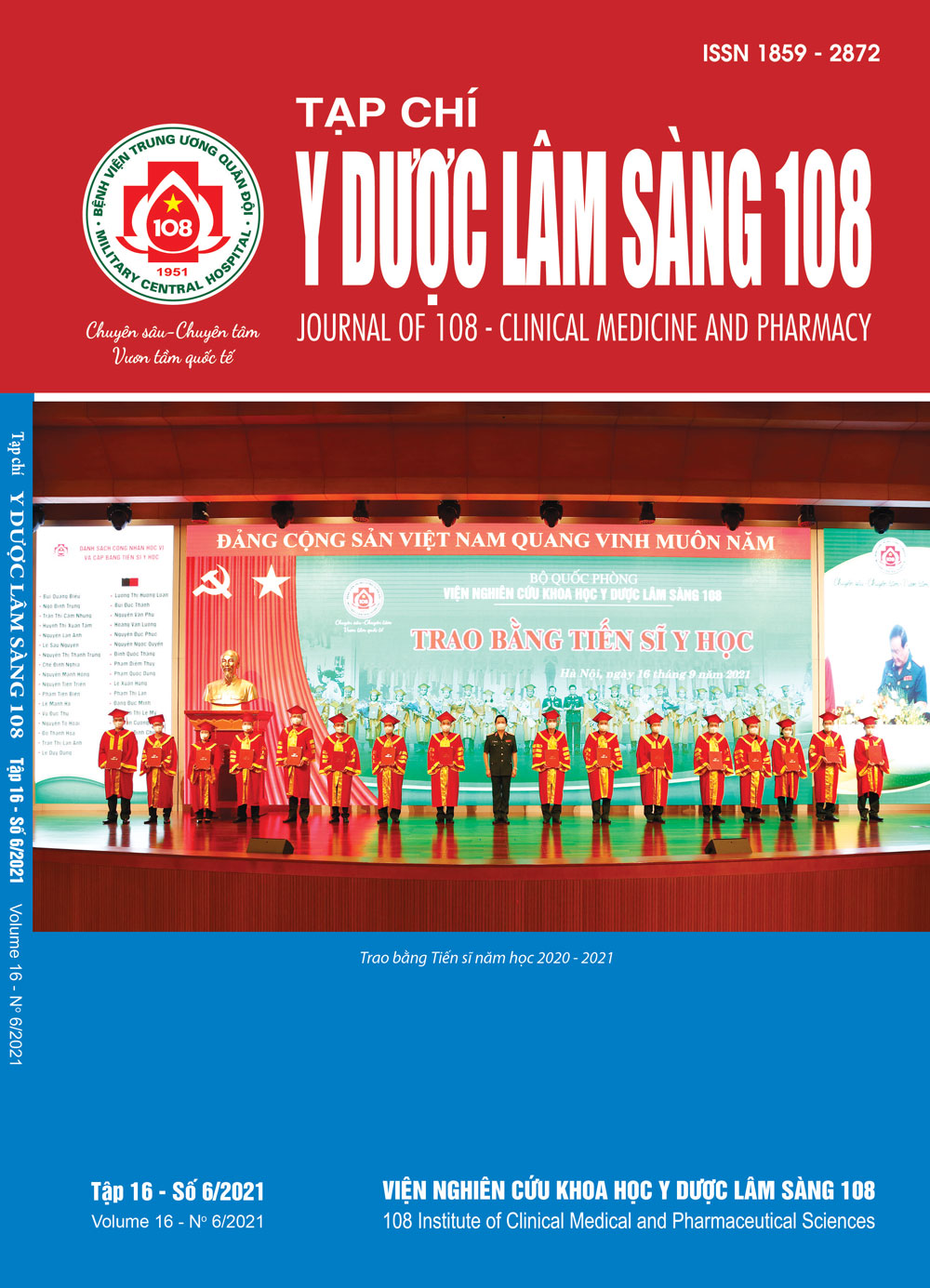Value of 18F-FDG PET/CT in intensity-modulated radiation therapy planning for upper third esophageal cancer patients
Main Article Content
Keywords
Abstract
Objective: To determine the effect of 18F-FDG PET/CT in intensity-modulated radiation therapy planning and treatment outcomes for upper-third esophageal cancer patients. Subject and method: A prospective interventional study in 60 patients with upper third esophageal cancer who underwent definitive chemo-radiation with IMRT technique. Toxicities and treatment responses were evaluated. Result: The mean tumor volumes on 18F-FDG PET/CT and CT were 26.1 ± 15.2cm3 and 27.5 ± 15.2cm3 (p<0.05), the median lymph node volumes on 18F-FDG PET/CT and CT were 4.2cm3 and 1.5cm3 (p<0.05), respectively. 18F-FDG PET/CT altered tumor volume in 63.4% and lymph nodes volume in 75% of patients. The 4-year overall survival and loco-regional control rates were 48.6% and 41.8%. The rates of acute toxicities grade 3 and grade 4 were 20% and 3.3%, respectively. Conclusion: 18F-FDG PET/CT altered the radiation treatment target volumes significantly when compared to CT with favorable treatment outcomes. It should be applied routinely in the radiotherapy planning procedure for upper-third esophageal cancer.
Article Details
References
2. Sun Xin, Wang Lei et al (2020) High vs. low radiation dose of concurrent chemoradiotherapy for esophageal carcinoma with modern radiotherapy techniques: A meta-analysis. Frontiers in Oncology 10: 1222.
2. Lin SH, Wang L, Myles B, Thall PF, Hofstetter WL, Swisher SG, Ajani JA, Cox JD, Komaki R, Liao Z (2012) Propensity score-based comparison of long-term outcomes with 3-dimensional conformal radiotherapy vs intensity-modulated radiotherapy for esophageal cancer. Int J Radiat Oncol Biol Phys 84(5): 1078-1085.
3. Sweet Ping Ng et al (2017) Follow up results of a prospective study to evaluate the impact of FDG-PET on CT-based radiotherapy treatment planning for oesophageal cancer. Clinical and Translational Radiation Oncology 2: 76-82.
4. Muijs CT, Beukema JC, Pruim J, Mul VE, Groen H, Plukker JT, Langendijk JA (2010) A systematic review on the role of FDG-PET/CT in tumour delineation and radiotherapy planning in patients with esophageal cancer. Radiother Oncol 97(2): 165-171.
5. Gabriel Sai Man Cheung (2013) Contribution of PET/CT in radiotherapy planning of oesophageal carcinoma: A review. Radiography 19: 259-269.
6. Münch S, Marr L, Feuerecker B, Dapper H, Braren R, Combs SE, Duma MN (2020) Impact of 18F-FDG-PET/CT on the identification of regional lymph node metastases and delineation of the primary tumor in esophageal squamous cell carcinoma patients. Strahlenther Onkol 196(9): 787-794.
7. Jimenez-Jimenez E, Mateos P, Aymar N, Roncero R, Ortiz I, Gimenez M, Pardo J, Salinas J, Sabater S (2018) Radiotherapy volume delineation using 18F-FDG-PET/CT modifies gross node volume in patients with oesophageal cancer. Clin Transl Oncol 20(11): 1460-1466.
8. Moureau-Zabotto L et al (2005) Impact of CT and 18F-deoxyglucose positron emission tomography image fusion for conformal radiotherapy in esophageal carcinoma. Int J Radiat Oncol Biol Phys 63(2): 340-345.
9. Leong L et al (2006) A prospective study to evaluate the impact of FDG-PET on CT-based radiotherapy treatment planning for oesophageal cancer. Radiother Oncol 78: 254-261.
 ISSN: 1859 - 2872
ISSN: 1859 - 2872
